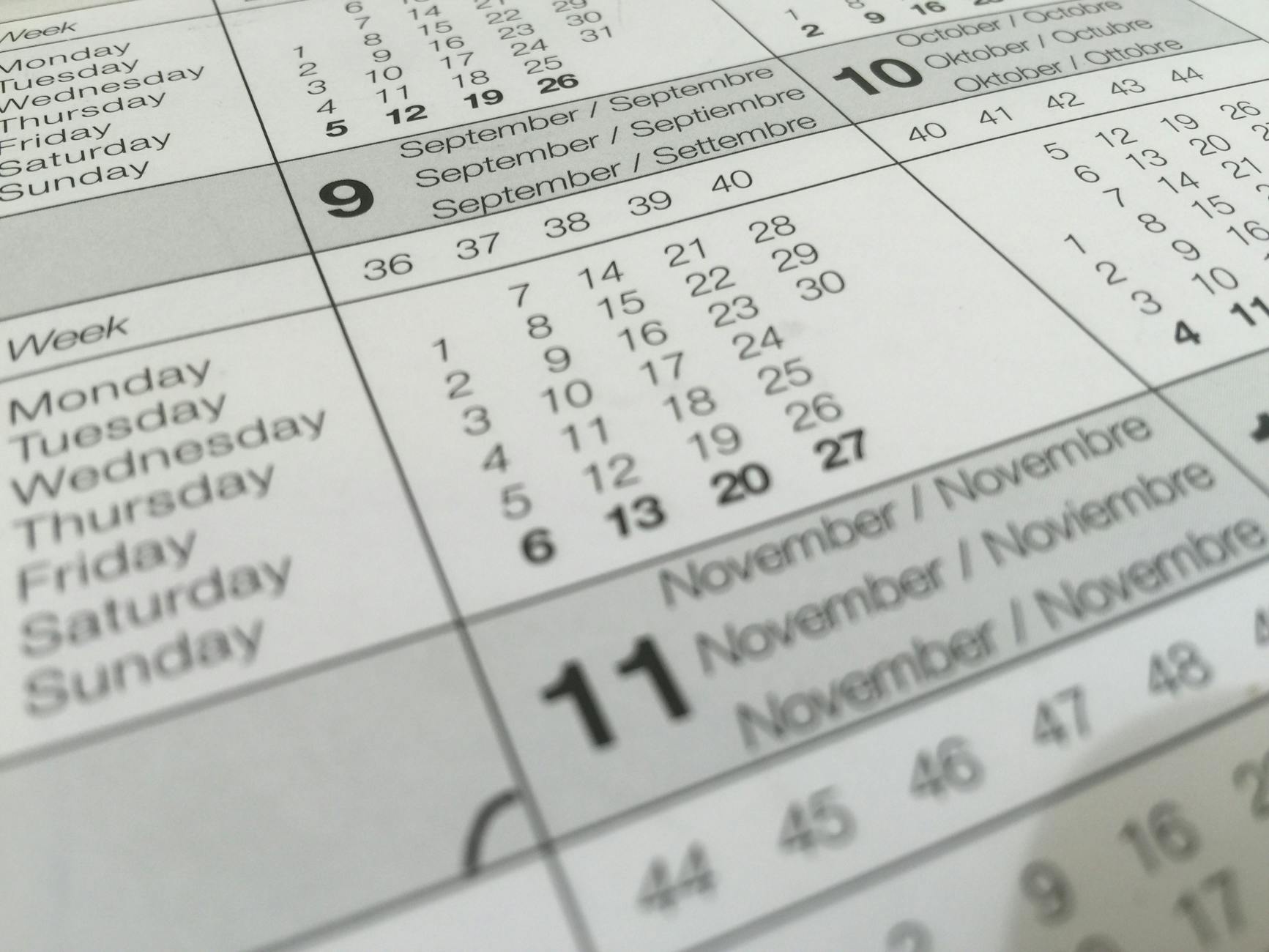We rely on the calendar every day, without ever really thinking about it. It informs us of the date, assists us in keeping track of festivals, holidays, and special events. But have you ever stopped to think, how did this method of timekeeping get started in the first place? The response lies in a journey that crosses astronomy, ancient civilizations, cultural heritage, and mathematical accuracy.

To be honest, I’ve never really thought of calendars as mere tools. To me, they’re one of the first “technologies” that humans created, measuring the universe, one day at a time.
The Early Days: How Humans Began Measuring Time
Since the beginning of civilization, people watched the Sun and Moon rise and set. That’s where the concept of time started, divided into three natural units: day, month, and year.
- A day was measured by the Earth’s rotation on its axis.
- A month was estimated from the orbit of the Moon around the Earth, approximately 29.5 days.
- A year was the duration that the Earth took to revolve around the Sun, approximately 365 days and 6 hours.
And now here comes the interesting part: a year by the Moon cycle (12 lunar months) totals only 354 days, which is about 11 days less than the solar year. To bridge this shortfall, ancient Indian astronomers devised a beautiful solution, adding an extra month (Adhik Maas or Mal Maas) every so often to synchronize the calendar with the seasons.
That idea of fixing the calendar by inserting a leap month? That’s genius! Think about running a space program without proper timekeeping, this was like the ancient equivalent of NASA-level thinking.
Ancient Calendars and Civilizations
The Egyptians were the first to develop the solar calendar, giving a year 365 days. The Romans later borrowed and tweaked this concept, but with a dash of politics and ego.
Come Julius Caesar, the fellow who brought in the Julian Calendar. It consisted of 365 days and included a leap year every four years. That solved lots of errors, but not all of them.
Pope Gregory XIII modernized the system in 1582 with the Gregorian Calendar, which we still use today. It made small but significant changes to rectify the Julian errors, particularly for leap year calculations more accurately.
Each time I glance at the calendar and notice February 29, I smile and think: humans literally battled with time and emerged victorious. That’s engineering and astronomy hand in hand.
Why Do Months Have Those Names?
Did you ever notice how September rhymes with “seven,” October with “eight,” and continue the pattern, despite being the 9th and 10th month? That’s not an error, it’s history!
The Roman calendar actually began in March, which made:
- September the seventh month (from Septem),
- October the eighth (Octo),
- November the ninth (Novem), and
- December the tenth (Decem).
Then came January and February before March, altering the numbers but not the names.
Here’s a brief look at the derivation of each month:
| Month | Origin |
|---|---|
| January | Named after Janus, the Roman god of doors and beginnings. |
| February | From Februa, a Roman purification festival. |
| March | Named after Mars, the god of war. |
| April | Possibly from Latin aperire (to open), as flowers bloom. |
| May | From Maia, a goddess of fertility. |
| June | From Juno, goddess of marriage and women. |
| July | Named after Julius Caesar. |
| August | Named after Emperor Augustus. |
| September | From Septem = seven. |
| October | From Octo = eight. |
| November | From Novem = nine. |
| December | From Decem = ten. |
I recall being puzzled in school: “Why is December the 12th month if ‘Dec’ means ten?” It turns out, even calendars have ancient legacy bugs!
The Indian Calendar: Rooted in Astronomy
India has an ancient timekeeping tradition, derived from both the solar and lunar movements. Such systems as the Vikram Samvat and Shaka Samvat are practiced in various regions of India.
In 1957, the National Calendar of India, derived from the Shaka Era, was introduced by the Indian Government, to offer a common system. This calendar is dated from the Chaitra month and matches well with seasons.
Lunar months in Indian calendars range from 29 to 30 days, totaling approximately 354 days in a year. As we have seen before, to align it with the solar year, an additional month is inserted every few years, a remarkable example of ancient precision at work.
I always marveled at how deep ancient Indian astronomy used to be. They did not merely observe the heavens, they computed and adjusted to perfection. What a legacy!
The Calendar: A Timeline of Science, Culture, and Civilization
This timekeeping narrative isn’t merely one of days’ counting, it is one of tracing how human civilizations developed. From star-gazing shepherds to space researchers, the calendar has remained the human tool of comprehending the universe’s rhythm.
Now, our calendars are not just a series of numbers, they represent thousands of years of human ingenuity, from Egyptian temples to Roman empires to Indian observatories. It’s a testament to how we measured, adapted, and controlled time itself.
For me, a calendar is not merely a tool. It’s more like a quiet companion, chronicling dreams, deadlines, festivals, failures, and successes. It’s the bridge between human existence and cosmic movement.
The Calendar: A Page That Carries the Universe!
What began as a mere means to count days evolved into a forceful system that dictates how we live, plan, and grow. Kudos to the minds that crafted it!
🧭 ExploreX Insight
This article is part of the ExploreX section, short, sharp, encyclopedia-style insights meant to deliver fascinating knowledge in just a minute or less!
ExploreX by M31GlobalNews





